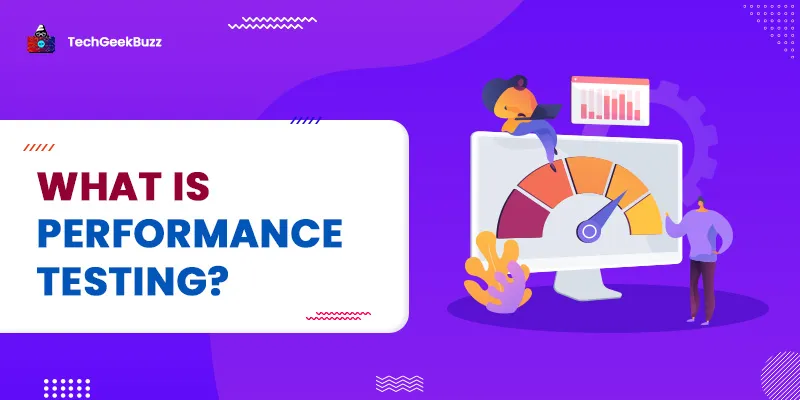What is White Box Testing?
This software testing is used for testing the internal structure, coding, and design of the software. The primary focus of White Box Testing is to verify input and output flow through the application so that developers can improve usability and design and strengthen security. Therefore all codes are visible to a tester in this software testing.
There are various names for White Box Testing, such as clear Box Testing, structural testing, open Box Testing, transparent Box Testing, Glass Box Testing, and code-based testing. It is a subpart of complete testing because the testing involves two ends, White Box Testing and Black-Box Testing.
Black Box Testing includes testing from the end-user type perspective. On the other side, White Box Testing is entirely based on the internal operations of an application. The title 'White box' is used due to its see-through box concept. The clear box/ White box name signifies the capacity to see through the software's external casing into its internal workings.
Furthermore, the "Black box" in "Black Box Testing" signifies not being capable of seeing the internal workings of the software so that the end-user experience can be tested.
Factors that can be verified in White Box Testing
It includes the testing of all software code for the following aspects:
- Inner security holes
- Broken or inadequately structured paths in a coding method
- The flow of particular inputs by the code
- Expected output
- The functionality of a restricted loop
- Testing of every statement, function, and object on a specific basis
Software testing can be performed at a system, unit level, and integration of software development. According to the objectives of White Box Testing, we can verify the workflow of any application. This software testing includes a predefined series of inputs for comparing with expected outputs, so in case of input does not match with the expected output, then testers can eliminate the error from the application.
White Box Testing Process
We have divided the process into two basic parts so that you can understand the process briefly. So let’s discuss the process of testing an application through the technique of White Box Testing:
Step 1: Understanding the Source codes
Firstly, a tester/developer requires understanding and learning the source code of any application. As we know, that White Box Testing includes the internal workings of an application, so the tester must be proficient in the programming languages. These languages are used in the testing of various applications.
Apart from this, the tester must be highly aware of secure coding methods, and security is a primary objective of testing software. Hence, it is also essential that a tester must be capable of finding security issues and preventing attacks from hackers who may insert malicious code in the application, both knowingly or unknowingly.
Step 2: Creating a test case and execution
The second essential step to White Box Testing includes testing the source code application for appropriate structure and flow. Testers need to create more and more sources for testing the application and develop little tests for every process in an application. This process demands specialized knowledge of the code. Other processes involve Manual Testing, error testing, and the usage of testing tools, so we will discuss these aspects in further information.
Techniques of White Box Testing
The primary technique of White Box Testing is Code Coverage analysis, which reduces gaps in the test case suite. It recognizes areas of programs that are not operated by any set of test cases. After the successful identification of gaps, the tester creates a complete test case for verifying untested aspects of code so that the quality of the product/software can be increased. There are various automated test tools available for performing code coverage analysis. So let's discuss a few techniques of coverage analysis in brief:
1. Statement Coverage
This technique needs all probable statements in the code, which are required to be tested through the testing method of software engineering.
2. Branch Coverage
The branch coverage technique checks all possible ways of the software application. There are various coverage types:
- Condition Coverage
- Multiple Condition Coverage
- Path Coverage
- Function Coverage
Every technique consists of values and attempts to test all parts of the software code. Testers can usually achieve 80 to 90% code coverage through Statement and Branch coverage.
Types of White Box Testing
It includes several testing types which are used for evaluating the usability of any application, a block of code, or a particular software package. So here is the list of various types of testing:
1. Unit Testing
It is the most common type of White Box Testing done on the application. Unit Testing is done on each unit/ block of code after it is developed. Unit testing is mostly performed by the programmer. From the perspective of a software developer , you need to produce a few code lines. Then test these codes to make sure that codes are working before continuing Unit Testing. It helps to recognize a majority of errors in the early lifecycle of software development. Therefore bugs and errors can be identified in a smooth and cheaper way.
2. Memory Leaks testing
Memory leaks always lead to slower-running applications. A quality developer must be a specialist in detecting leaks because it is essential to run software appropriately. Apart from it, there are various testing types that can work in both White box and black-Box Testing.
3. White Box Penetration Testing
In this type of testing, the tester has full information on the application's comprehensive network, source code, IP addresses, and server. The primary aim of this testing is to penetrate or attack the codes from various angles to expose security threats and find errors in them.
4. White Box Mutation Testing
This type of testing is used to discover the most suitable coding techniques so that testers can expand a software solution.
Various types of Tools
There are various types of tools available, so here is the list of some tools:
- Parasoft Jtest
- EclEmma
- NUnit
- PyUnit
- HTMLUnit
- CppUnit
Pros and Cons
Pros
- This testing helps to optimize the codes by finding hidden bugs and errors in the software.
- Test cases in White Box Testing can be efficiently automated.
- Testing is more accurate due to all code paths typically covered.
- If GUI is not available, then testers can start the testing in SDLC.
Cons
- Usually, It can be complicated and expensive.
- Production errors occur if one developer executes the test case and another developer doesn't execute the test case properly.
- It needs all professional resources with complete knowledge of implementation and programming.
- It is a little bit time-consuming; larger programming applications take more.
Conclusion
It is a bit complicated, and the complexity includes a lot of work for testing the application appropriately. In this article, we have discussed White Box Testing completely regarding the overview, process, types, and tools so that you can understand every aspect of this testing.
People are also reading:



![What is Waterfall Model? [Phases, Pros, & Cons]](/media/new_post_images/Waterfall_Model.webp)
